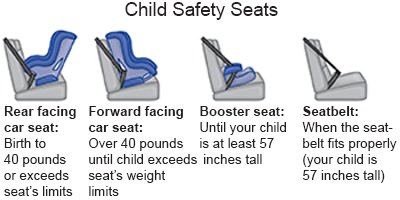Motor Vehicle Accident
Medically reviewed by Drugs.com. Last updated on Apr 6, 2025.
A motor vehicle accident (MVA) can cause injury from the impact or from being thrown around inside the car. You may have a bruise on your abdomen, chest, or neck from the seat belt. You may also have pain in your face, neck, or back. You may have pain in your knee, hip, or thigh if your body hits the dash or the steering wheel. Muscle pain is commonly worse 1 to 2 days after an MVA.
DISCHARGE INSTRUCTIONS:
Call your local emergency number (911 in the US) if:
- You have new or worsening chest pain or shortness of breath.
Return to the emergency department if:
- You have a severe headache.
- You have abdominal pain, cramping, or vaginal bleeding.
- You have weakness, tingling, or numbness in your arms or legs.
- You have new or worsening pain that makes it hard for you to move.
- You have pain that develops 2 to 3 days after the MVA.
- You have nausea and vomiting that does not get better within 2 days.
- You have pain or cramping in your abdomen or low back.
- You feel a gush or trickle of fluid leaking from your vagina.
Call your doctor if:
- You have questions or concerns about your condition or care.
Medicines:
You may need any of the following:
- Pain medicine may be needed. Do not wait until your pain is severe before you take this medicine. The medicine may not work as well at controlling your pain if you wait too long to take it. Pain medicine can make you dizzy or sleepy. Prevent falls by asking for help when you want to get out of bed.
- NSAIDs , such as ibuprofen, help decrease swelling, pain, and fever. This medicine is available with or without a doctor's order. NSAIDs can cause stomach bleeding or kidney problems in certain people. If you take blood thinner medicine, always ask if NSAIDs are safe for you. Always read the medicine label and follow directions. Do not give these medicines to children younger than 6 months without direction from a healthcare provider.
- Take your medicine as directed. Contact your healthcare provider if you think your medicine is not helping or if you have side effects. Tell your provider if you are allergic to any medicine. Keep a list of the medicines, vitamins, and herbs you take. Include the amounts, and when and why you take them. Bring the list or the pill bottles to follow-up visits. Carry your medicine list with you in case of an emergency.
Self-care:
- Use ice and heat. Ice helps decrease swelling and pain. Ice may also help prevent tissue damage. Use an ice pack, or put crushed ice in a plastic bag. Cover it with a towel and apply to your injured area for 15 to 20 minutes every hour, or as directed. After 2 days, use a heating pad on your injured area. Use heat as directed.
- Gently stretch. Use gentle exercises to stretch your muscles after an MVA. Ask your healthcare provider for exercises you can do.
Safety tips:
The following can help prevent another MVA or lower your risk for injury:
- Always wear your seat belt. This will help reduce serious injury from an MVA. The seat belt should have one strap that goes across your chest and another that goes across your lap.
- Always put your child in a child safety seat. Use a safety seat made for his or her age, height, and weight. Choose a safety seat that has a harness and clip. Place the safety seat in the middle of the car's back seat. The safety seat should not move more than 1 inch in any direction after you secure it. Always follow the instructions provided for your safety seat to help you position it. The instructions will also guide you on how to secure your child properly. Ask your healthcare provider for more information about child safety seats.

- Decrease speed. Drive the speed limit to reduce your risk for an MVA.
- Do not drive if you are tired. You will react more slowly when you are tired. The slowed reaction time will increase your risk for an MVA.
- Do not talk or text on your cell phone while you drive. You cannot respond fast enough in an emergency if you are distracted by texts or conversations.
- Do not use drugs or drink alcohol before you drive. You may be more tired or take risks that you normally would not take. Do not drive after you take medicine that makes you sleepy. Use a designated driver or arrange for a ride home.
- Help your teenager become a safe driver. Be a good role model with your own driving. Talk to your teen about ways to lower the risk for an MVA. These include not driving when tired and not having distractions, such as a phone. Remind your teen to always go the speed limit and to wear a seat belt.
Follow up with your doctor as directed:
Write down your questions so you remember to ask them during your visits.
© Copyright Merative 2025 Information is for End User's use only and may not be sold, redistributed or otherwise used for commercial purposes.
The above information is an educational aid only. It is not intended as medical advice for individual conditions or treatments. Talk to your doctor, nurse or pharmacist before following any medical regimen to see if it is safe and effective for you.
Further information
Always consult your healthcare provider to ensure the information displayed on this page applies to your personal circumstances.
